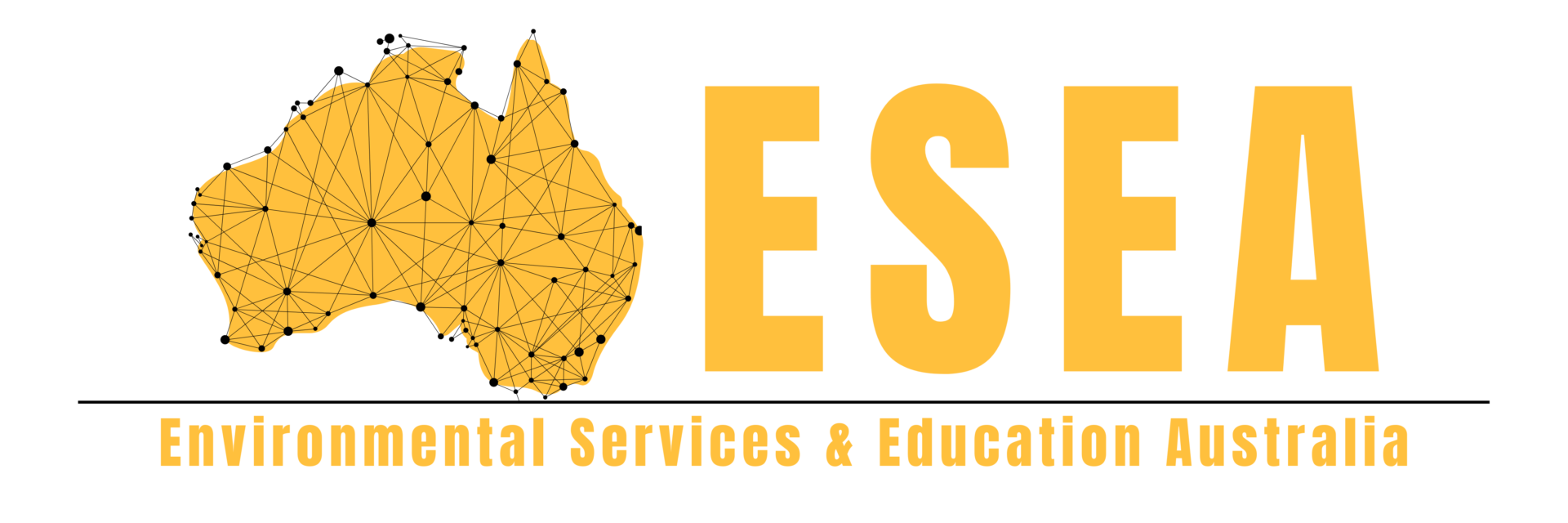Biodiversity & Ecological Assessments
We are
BAM Accredited Assessors
ESEA specialise in conducting comprehensive ecological and biodiversity assessments in New South Wales (NSW) with a focus on adhering to the stringent guidelines of the Biodiversity Assessment Method (BAM) and Biodiversity Offset Scheme (BOS). Our technical proficiency extends to implementing best-practice species survey methods, ensuring that our assessments are conducted with the highest level of precision and accuracy.
We navigate the complexities of the BAM, delivering assessments that not only meet regulatory standards, but also contribute to sustainable development and quality construction. With a localised understanding of NSW species and ecosystems, our assessments are tailored to address the specific biodiversity challenges of the region.
ESEA take pride in staying at the forefront of ecological and environmental science, providing innovative and efficient solutions. Our collaborative approach ensures that your unique project requirements are not only understood but met with the utmost expertise. Our commitment to client success is evident in our track record of delivering quality advice.
Choose ESEA for unparalleled technical proficiency in ecological and biodiversity assessments.
Why do I need an Ecological Assessment?
Producing an ecological assessment for your proposed development is imperative from both a regulatory compliance and environmental protection perspective. Ecological assessments serve as a crucial tool in evaluating and mitigating potential impacts of development on the local ecosystem, adhering to the requirements set forth by the Biodiversity Conservation Act 2016 and associated regulations.
An ecological assessment involves a systematic examination of the project site to identify and assess the existing flora, fauna, and ecosystems. This comprehensive analysis is conducted using best-practice species survey methods, ensuring a thorough understanding of the biodiversity present. By employing scientifically rigorous techniques, the assessment determines the potential impacts of the development on the local environment, particularly on threatened species, ecological communities, and habitat.
The assessment also considers factors such as vegetation communities, habitat quality, and connectivity. This forms the basis for predicting the potential ecological consequences of the proposed development, including habitat loss, fragmentation, and alterations to biodiversity dynamics.
Regulatory bodies in NSW require developers to demonstrate compliance with the Biodiversity Conservation Act and associated regulations. An ecological assessment provides the necessary evidence to support the development application by outlining strategies for minimising and mitigating environmental impacts. It offers a proactive approach to environmental planning, enabling developers to incorporate measures that preserve and enhance biodiversity while facilitating the approval process.
What are the different types of ecological assessment, and which do I need?
In NSW there are different types of ecological assessments, each tailored to specific contexts and development scenarios. The determination of the required type of ecological assessment is influenced by the scale, location, and nature of the proposed development, and the potential impact on biodiversity. Here are some key types of ecological assessments:
Preliminary Ecological Assessment (Desktop Ecological Assessment):
- Scope: Conducted in the early planning stages of a project – primarily based on existing data and literature.
- Purpose: Identifies potential ecological constraints within a subject site and provides initial insights into potential impacts. No fieldwork is conducted.
- Determinants: Project scale, site characteristics, and regulatory requirements
Detailed Ecological Assessment (Flora and Fauna Assessment):
- Scope: Involves field surveys to identify and record plant, animal, ecological communities and habitat features present within the subject site and surrounding area.
- Purpose: Focuses on assessing the diversity and presence of specific species on the site, and the likely impacts of a proposed development on these entities.
- Determinants: Project size, potential impact on specific species, and regulatory requirements.
Biodiversity Development Assessment Report (BDAR):
- Scope: Comprehensive assessment integrating multiple ecological aspects.
- Purpose: Evaluates the cumulative impact of a development on biodiversity and calculates the offsetting requirements for development to proceed.
- Determinants: Larger-scale developments, projects with potential significant impacts on biodiversity, and compliance with the Biodiversity Conservation Act.
Species Impact Statement (SIS):
- Scope: Focuses on the impact of a development on specific threatened or endangered species.
- Purpose: Assesses and proposes mitigation measures for species at risk.
- Determinants: Presence of threatened species, development scale, and regulatory requirements.
The determination of the appropriate ecological assessment type is influenced by regulatory frameworks, project characteristics, and potential environmental impacts. It’s crucial to consider these assessments early in the planning process to facilitate a smoother approval process and to integrate effective biodiversity conservation measures into the development.
Contact ESEA so that we may assist in identifying the most suitable assessment type for your development.
What does BOS, BAM and BDAR mean?
What is the Biodiversity Assessment Method
The Biodiversity Assessment Method (BAM) is a systematic framework and set of rules established under the Biodiversity Conservation Act 2016. It provides a standardised methodology for assessing the impacts of development on biodiversity and determining the offset requirements to mitigate those impacts. The primary goal of BAM is to maintain or improve overall biodiversity outcomes in the context of development activities.
The BAM is also used to assess biodiversity values on land that will be protected for future generations. The predicted improvement in biodiversity values on protected land is also expressed in biodiversity credits. Credits generated on protected land can then be bought to offset the biodiversity impacts on land that is developed or cleared.
What is the Biodiversity Offsets Scheme?
The Biodiversity Offsets Scheme (BOS) recognises the intrinsic value of biodiversity with a framework to avoid, minimise and offset the impacts on biodiversity from development or vegetation clearing. Losses caused by unavoidable impacts on biodiversity are balanced against biodiversity gains by bringing together landholders who want to develop or clear vegetation on their land with landholders who want to protect and manage biodiversity values on their land into the future.
When the BOS applies to a development or vegetation clearing proposal, the biodiversity impacts of the proposal are assessed using the BAM and expressed in biodiversity credits. The BAM is a transparent, consistent and scientific method used to assess biodiversity values and calculate credits.
When does the Biodiversity Offsets Scheme apply?
Application of the BOS is generally required where a proposal for development, vegetation clearing or other activity meets certain thresholds relating to whether the proposal is likely to significantly affect threatened species, ecological communities or their habitats.
The BC Act and BC Reg provide criteria for determining where a proposal is likely to significantly affect threatened species, ecological communities or their habitats:
- it is carried out in a declared area of outstanding biodiversity value (AOBV), or
- it involves clearing of native vegetation or a prescribed impact on land included in the Biodiversity Values Map, or
- it involves clearing of native vegetation that exceeds the relevant area clearing threshold, or
- it is likely to significantly affect threatened species, ecological communities or their habitats according to the Test of Significance.
The criteria listed above that apply to a proposal will differ depending on the planning or approval pathway that applies to the proposal. Whether a proposal meets the relevant thresholds will depend on the location, nature and scale of the proposal. There may be exemptions or other considerations that are required to be taken into account when determining whether the BOS applies to a proposal.
General guidance on when the BOS applies can be sought from a project ecologist.
What is Avoid, Minimise and Offset, and how does it apply to my development?
The avoid, minimise and offset hierarchy requires the impacts on biodiversity values of a proposal (to which the BOS applies) to first be avoided, and any residual impacts to be minimised and offset. It is a legal requirement of the Biodiversity Conservation Act 2016 to apply this hierarchy to impacts on biodiversity values.
Biodiversity conservation measures, such as the retirement of biodiversity credits, are used to offset the residual impacts on biodiversity values that remain after actions to avoid or minimise those impacts are taken.
Inadequate consideration of avoiding and minimising biodiversity impacts can compromise the approval of a proposal for development or vegetation clearing. Consideration at an early stage in project planning can reduce this risk as well as provide greater opportunities to reduce clearing impacts on biodiversity and thereby reduce development costs, including costs associated with biodiversity conservation measures.
Consulting
Committed To Quality
Environmental consulting is a dynamic field that requires adaptability and a commitment to ongoing improvement. At ESEA, we embrace a culture of continuous learning and improvement, allowing us to stay at the forefront of industry best practices.
Choose ESEA for environmental consulting services that go beyond mere compliance – we’re your partner in building a sustainable and resilient future.
We Follow Best Practices
We stay abreast of the latest regulations and practises to ensure our clients receive the most accurate and up-to-date guidance, ensuring that your project remains in full compliance with all relevant laws and regulations.
- Quality Outputs
- Optimal Solutions
- Efficient Timelines

